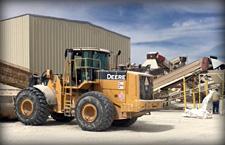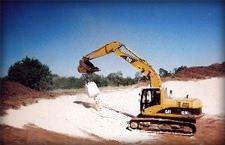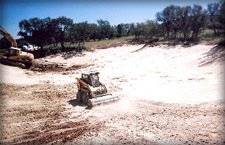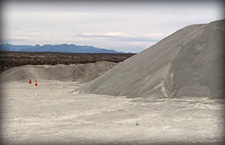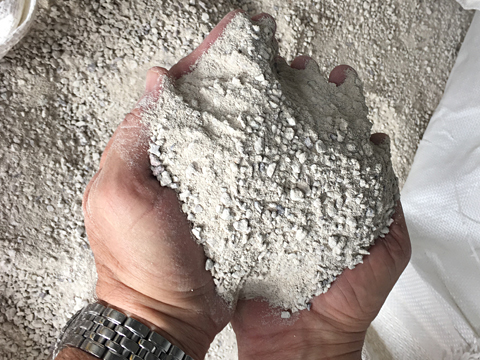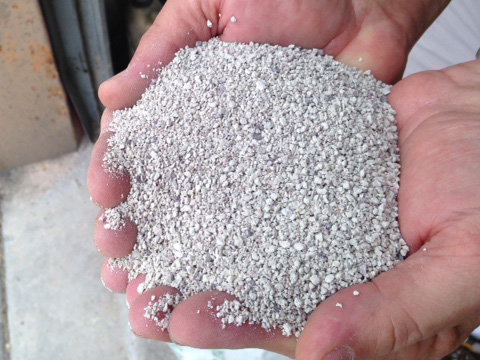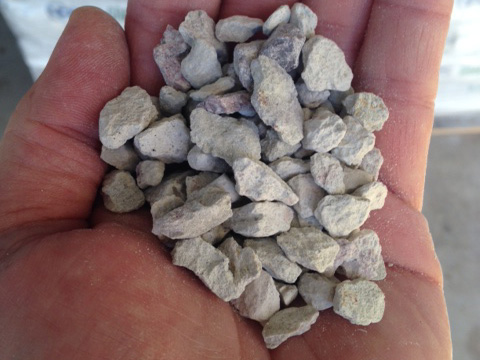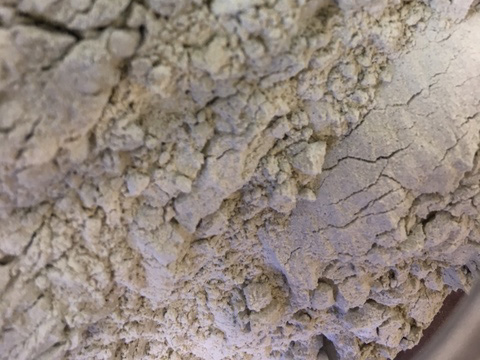Bentonite Pond Sealer Application Guide

While bentonite pond sealer has the ability to create a layer with low permeability at the base of a body of water, it is also important to keep in mind that for this to happen, proper application is key. It will not do you any good to buy sodium bentonite pond sealer if your construction crew ends up mixing or sprinkling it around improperly. Here at Southwestern Materials, our staff has the experience and knowledge to provide accurate and tailored advice on how to use our products to produce the greatest effect.
If you would like to find out more about how to properly apply bentonite pond sealer, you have come to the right place. Check out our application guide below. For more customized advice, you can get in touch with us directly at 512-280-7801 toll free @ 888-600-6077 or request a quote online using our form.
The friendly experts at Southwestern Materials look forward to telling you what we, as a bentonite supplier, can do for you.
Applying Bentonite Pond Sealer
There are several ways to apply bentonite pond sealer. Ideally, the sealing should take place either while the pond is being constructed initially or after draining and fully drying out the pond. However, if that is not possible, there is a method that can be used, though there will be a higher chance that a full seal will not result.
The various bentonite pond sealer application methods are below:
- Mixing Bentonite with Native Soil – Here, the bentonite pond sealer is mixed with the soil that forms the base of the pond to reduce permeability and prevent leaking or water seeping out. For this method to work, it is important for the soil to be analyzed by a soil lab. This analysis will determine how much bentonite will be needed, in order to achieve a proper seal. Typically, what is required is a weight blend of about 5 to 10%, when comparing the amount of bentonite added to the native soil.
- The Blanket Method – As the name suggests, this method involves adding bentonite to a pond bed as a form of blanket layer. Usually, bentonite pond sealer is applied so that the layer is 1 to 4 inches thick. This bentonite layer is then covered with a protective layer of soil. Once that is done, moisture will need to be added to the entire site, and the pond bed will need to be properly compacted.
- The Sprinkling Method – This third method of applying bentonite pond sealer is the one that can be used when it is not possible to work with a drained and dried pond. Here, the bentonite is sprinkled onto the pond’s water surface, above where the leaks or seepage are believed to be occurring. The bentonite will sink and, if done in the proper location, will seal the leaks at the bottom of the pond. That said, this method may not necessarily result in an effective seal because of the chance that the bentonite will not land in exactly the right locations.
Integrating Bentonite Pond Sealer During Construction
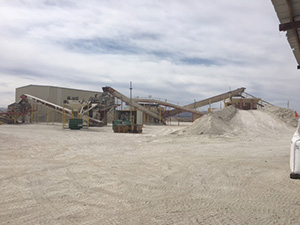
Sealing a pond has a higher likelihood of success if the bentonite pond sealer is added during the construction phase. The general flow of construction involves emptying, spreading, mixing, and compacting. Important steps include:
- For a proper dry bentonite pond sealer application, the pond should be drained, allowed to dry completely, and kept dry while the liner is being constructed. Once the soil is dry, the mixing with bentonite can begin. The bentonite pond sealer is spread over the soil at the specified application rate, and then it is mixed with the soil so that a uniform combination of the two results. Mixing can be done with large scrapers, dozers, and discs.
- Once the bentonite pond sealer mixing is done, the combined soil needs to be hydrated to within +/- 2% of optimum moisture content. After the hydration, the soil is compacted. This helps to reduce voids within the soil, and allows the clay particles to flatten further. It is very important for no more than 6 inch layers or lifts to be constructed at a time.
- We recommend that an on-site supervisor be put in charge, to oversee each of these phases. Each bed of soil is unique and will respond differently to hydration and compacting. This makes it important for someone with experience to be there to observe the soil, and how it responds to each phase. Second, the work itself can be rather hard and tedious, so it helps to have someone on the ground assisting the machinery operators. Most contractors are used to preparing a site for building construction, where the situation is much more forgiving of soil that is not perfectly prepared. Pond water is less forgiving, and in fact, the water will very quickly find any areas where the bentonite pond sealer was improperly applied.
Learn More About How to Apply Bentonite Pond Sealer
For more detailed information on how to apply bentonite pond sealer to a particular location, please get in touch with us online or by phone at 512-280-7801 toll free @ 888-600-6077. As a leading bentonite supplier that is trusted by our clients throughout Texas and nationwide, we do our best to provide all of the information and advice that you might need.

